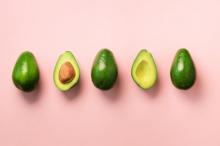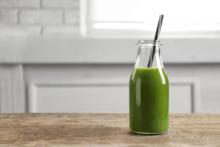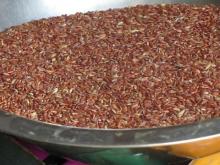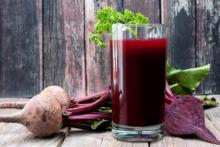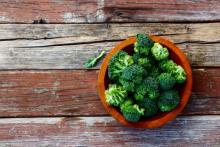nutrients
8 Alternatives To Cow's Milk
Milk. It was the beverage of choice growing up as a child in our house. Never skim, sometimes raw, and with any meal of the day. In fact, cow milk is the beverage of choice in most American households.
Superfood 101: Asparagus! (Includes Recipe)
The temperatures are on the rise, flowers are in bloom and farmer’s markets are stocked full of this season’s finest. If you look, you will find asparagus most dominantly known in its green variety, but also available in white and purple, stocked on the shelves. This nutrient dense vegetable is only available in the produce aisle of your local supermarket from February to June, with its peak harvest in April, when the price for these gems may come down a bit.
Why all the hype about asparagus?
Try Juicing This: Green Beans
Green beans aren’t exactly the “coolest” vegetable of the hour, but there’s more to this crispy legume than meets the eye.
Also referred to as “snap beans” or “string beans,” green beans have been gracing dinner plates for centuries. Though we don’t usually give green beans as much attention as say, kale or sprouts, they are actually incredibly high in nutrients and even have some “superfood” qualities.
Superfood 101: Red Rice!
Red rice is a whole grain that gets it color from compounds called anthocyanins that are found in red vegetables like red cabbage and red onions.. It is found in the outer layer of the grain, known as bran, and is closely related to bioflavonoids. Red rice is also an effective antioxidant. It has been considered an exotic grain, especially in the United States, and is grown in several regions throughout the world.
The Tonic You Haven't Tried: Beet Kvass
I thought I was up to date on probiotic-packed fermented products, but it turns out I was missing one very old, and very important tonic: beet kvass. I was first introduced to this powerful beverage sometime last year, when a stall at the local farmer’s market I frequent suggested I try their homemade kvass.
Superfood 101: Bulgur!
Bulgur is processed wheat that is native to the Mediterranean basin region and is one of the earliest processed foods that began being used approximately 4000 years ago. It is made by steaming wheat then drying it and cracking the dried kernels. Bulgur was initially processed by boiling wheat in a huge pot for many days to be sure it was thoroughly cooked; then the contents of the pot were spread out on roofs to dry in the sun.
Make Your Pancreas Happy With These Foods
If you think your pancreas is not particularly important, think again. A healthy pancreas is essential for a healthy digestion; so here’s what to eat to make your pancreas function at its optimum…
Organic Home Garden Series: 7 Basic Steps For Seed Sprouting
Sprouting seeds is a smart and healthy way to use up any leftover seeds you may have from your garden. Sprouted seeds have been recorded as being consumed and grown over many centuries. Not only does sprouting seeds provide a quick way to grow and provide fresh vegetables, but it also allows for a way for food to be grown indoors during the cold weather.
Mother Earth's Medicine Cabinet: The Healing Benefits of Sassafras
Sassafras (Sassafras albidum) is actually a really versatile healing plant, and it looks really interesting, too - often times one bunch of this herb can contain different types of leaves! This tree smells so amazing -- every part of it has a strong, sweet aroma that’s almost relaxing.

